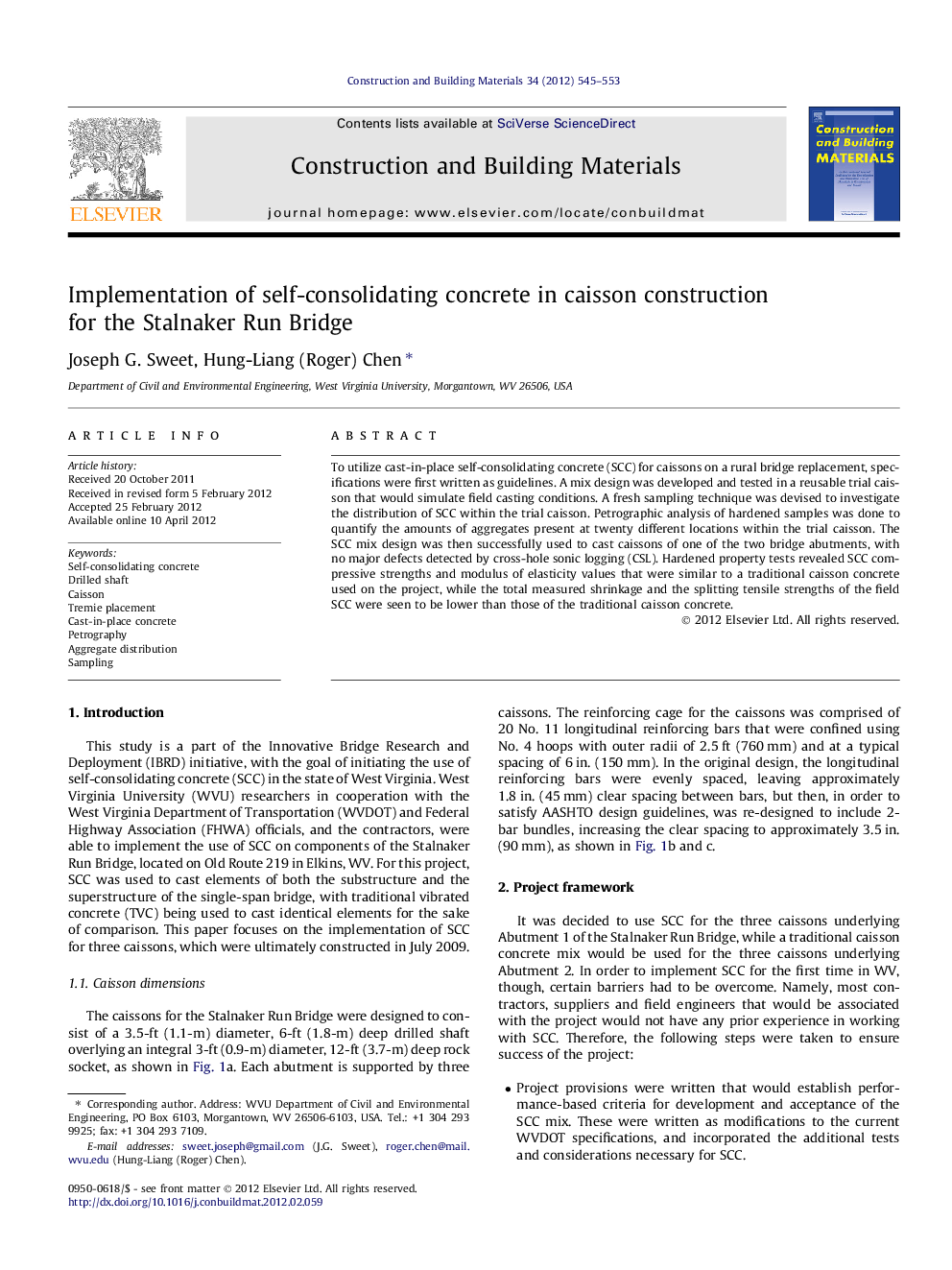| Article ID | Journal | Published Year | Pages | File Type |
|---|---|---|---|---|
| 259026 | Construction and Building Materials | 2012 | 9 Pages |
To utilize cast-in-place self-consolidating concrete (SCC) for caissons on a rural bridge replacement, specifications were first written as guidelines. A mix design was developed and tested in a reusable trial caisson that would simulate field casting conditions. A fresh sampling technique was devised to investigate the distribution of SCC within the trial caisson. Petrographic analysis of hardened samples was done to quantify the amounts of aggregates present at twenty different locations within the trial caisson. The SCC mix design was then successfully used to cast caissons of one of the two bridge abutments, with no major defects detected by cross-hole sonic logging (CSL). Hardened property tests revealed SCC compressive strengths and modulus of elasticity values that were similar to a traditional caisson concrete used on the project, while the total measured shrinkage and the splitting tensile strengths of the field SCC were seen to be lower than those of the traditional caisson concrete.
► Project specifications were employed to develop a suitable SCC mix design. ► Trial caisson simulated caisson construction into wet hole conditions. ► “Fresh coring” practices collected samples of fresh concrete from trial caisson. ► Image analysis quantified aggregate contents of hardened specimens. ► Cast-in-place SCC used for first time in WVDOT construction project.
